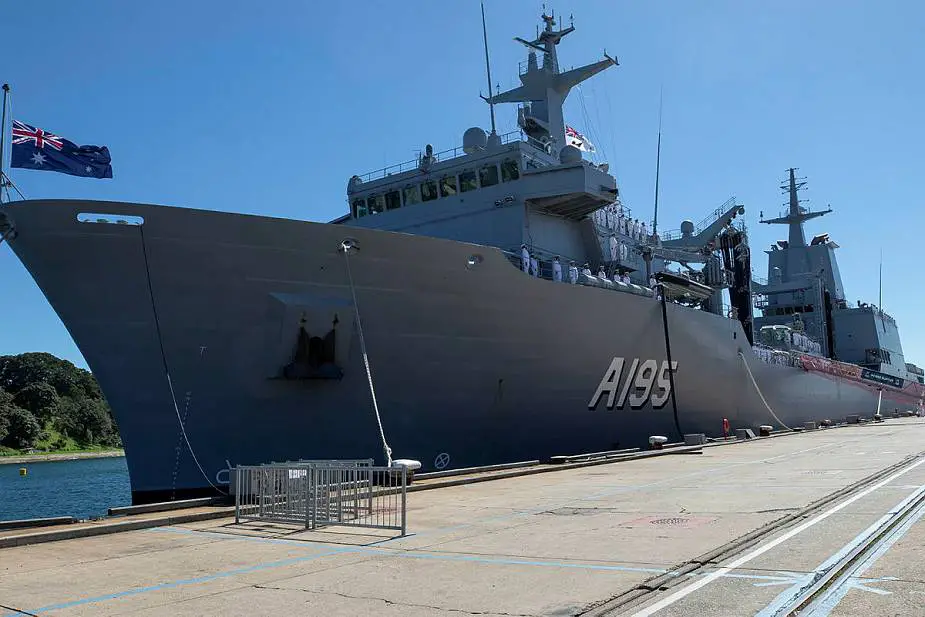Breaking news
Australian Navy has commissioned itw new HMAS Supply Supply-Class Auxiliary Oiler Replenishment ship.
On April 10, 2021, the Australian Navy has commissioned its new HMAS Supply (II), the lead ship of two Supply-Class Auxiliary Oiler Replenishment (AOR) built for the Royal Australian Navy by Spanish shipbuilder, Navantia.
Follow Navy Recognition on Google News at this link
 On 10 April 2021, the Royal Australian Navy welcomed into service HMAS Supply (II), the first of two new Supply Class Auxiliary Oiler Replenishment (AOR) ships. (Picture source Australian Navy)
On 10 April 2021, the Royal Australian Navy welcomed into service HMAS Supply (II), the first of two new Supply Class Auxiliary Oiler Replenishment (AOR) ships. (Picture source Australian Navy)
The contract to build these vessels was awarded in 2016 with both ships due to be delivered in 2020. The design of these vessels is based on the Navantia built and designed, Spanish oiler ‘Cantabria’ that is currently operated by the Spanish Navy.
The HMAS Supply was laid down on 18 November 2017 and launched at the Navantia Shipyards in Ferrol, Spain on 24 November 2018. The second ship was launched in September 2019 during a ceremony in Ferrol, Spain.
Carrying fuel, water, food, parts and dry cargo, the HMAS Supply will primarily provide logistics replenishment to naval combat units at sea. They will also be able to support Humanitarian and Disaster Relief operations domestically and regionally. The ship is able to carry 8,200 m³ of marine diesel fuel, 1,450 m³ of JP-5 jet fuel, 1,400 m³ of freshwater, 270 tons of ammunition, and can supply 470 tons of provisions.
In addition to replenishment, the HMAS Supply (II) can be used to combat environmental pollution at sea, provide logistics support for the armed forces, and to support humanitarian and disaster relief (HADR) operations following a natural disaster.
The HMAS Supply (II) has an overall length of 173.9 m, a displacement of 19,500 t, and a full-load deadweight of 9,800 tons. Its design draught and beams will be 8 m and 23 m respectively.
The vessel can accommodate up to 122 personnel including crew. She has a flight deck at the stern to support the operation of a single helicopter. The propulsion system consists of two MAN 18V 32/40 main engines and four MAN 7L21/31 generator sets. She can reach a top speed of 20 knots (37 km/h) with a maximum cruising range of 6,000 nautical miles (11,000 km) at 13 knots (24 km/h).


























